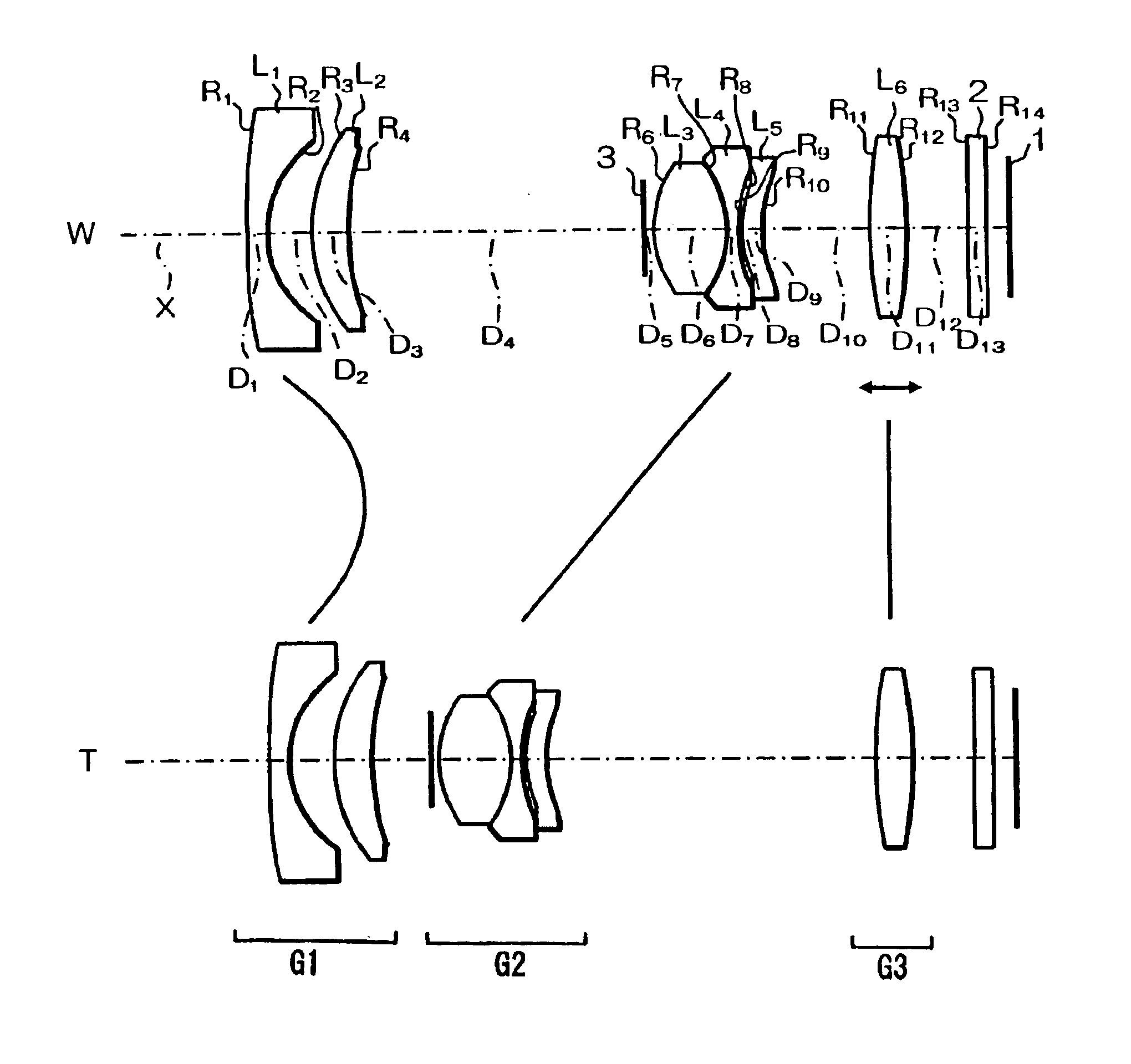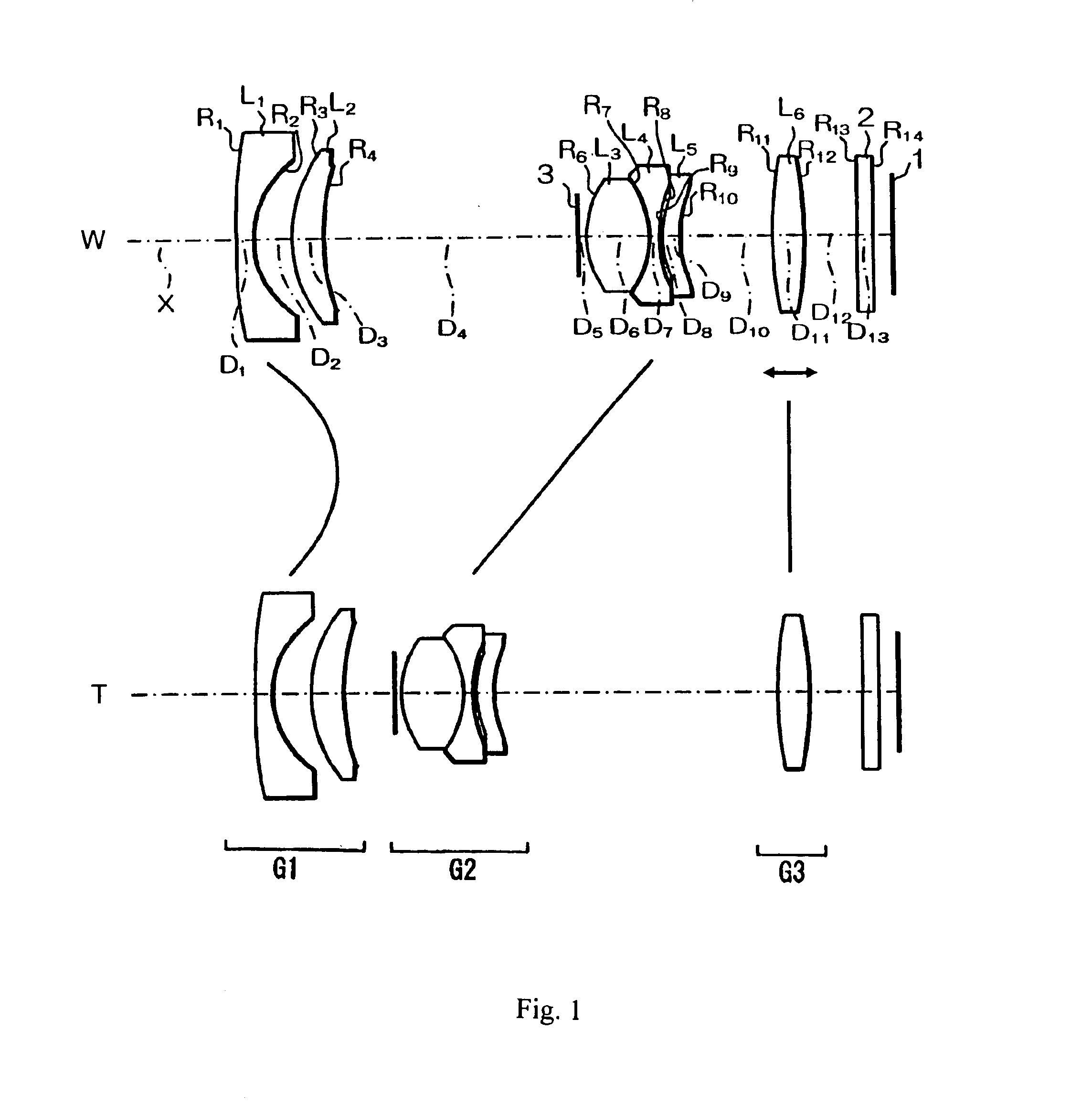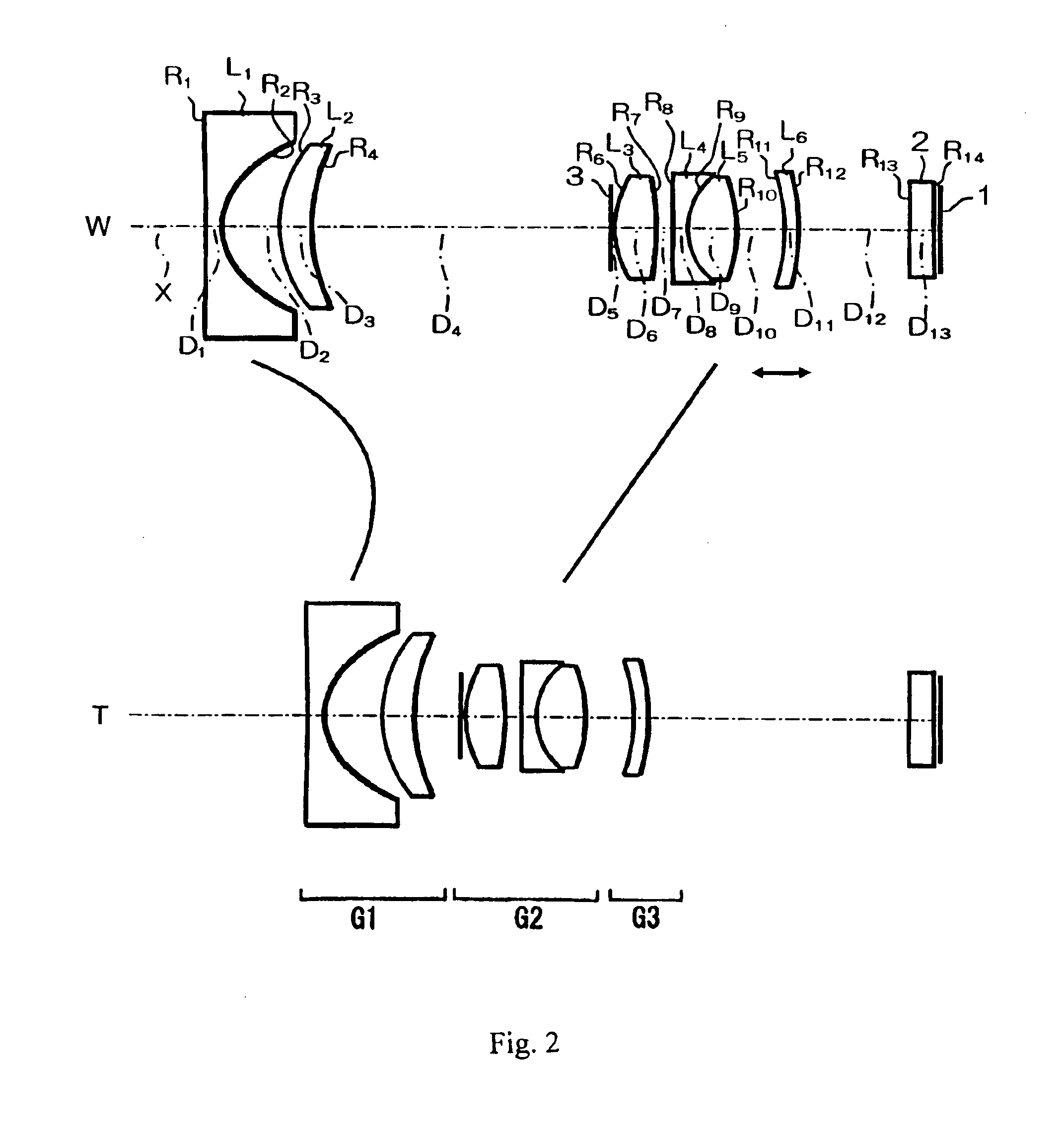Three-group zoom lens including at least one aspheric lens surface
a three-group, aspheric lens technology, applied in the direction of optics, instruments, diffraction gratings, etc., can solve the problems of difficult simultaneous reduction of spherical aberration the desired amount, too large zoom lens, and too expensive to manufacture, etc., to achieve favorable distortion correction, high resolution, and low cost
- Summary
- Abstract
- Description
- Claims
- Application Information
AI Technical Summary
Benefits of technology
Problems solved by technology
Method used
Image
Examples
embodiment 1
[0037]In Embodiment 1, as shown in FIG. 1, the three-group zoom lens includes, in order from the object side, a first lens group G1 of negative refractive power, a second lens group G2 of positive refractive power, and a third lens group G3 of positive refractive power. The first lens group G1 and the second lens group G2 are moved relative to one another during zooming from the wide-angle end to the telephoto end so as to reduce the distance between the two lens groups, and the second lens group G2 and the third lens group G3 are moved relative to one another during zooming from the wide-angle end to the telephoto end so as to increase the distance between these two lens groups. Additionally, the third lens group G3 is moved toward the object side during focusing from a focus at infinity to a near point focus. In this manner, the three-group zoom lens of Embodiment 1 provides changes in focal length by moving the three lens groups along the optical axis X while maintaining high lig...
embodiment 2
[0062]Embodiment 2 is very similar to Embodiment 1 and therefore only the differences between Embodiment 2 and Embodiment 1 will be explained. A main difference from Embodiment 1 is that the shape of some of the aspheric surfaces are prescribed by the above Equation (A) in terms of aspheric coefficients with even numbered subscripts of sixteen or larger being non-zero as well as aspheric coefficients with even numbered subscripts smaller than sixteen being non-zero. Thus, even-numbered powers of Y of sixteen or larger, as well as even-numbered powers of Y smaller than sixteen, help determine the shape of some of the aspheric lens surfaces. In other words, in Embodiment 2, both lens surfaces of the first lens element L1 are prescribed by the above Equation (A) in terms of aspheric coefficients, with the even-numbered coefficients having subscripts of sixteen or larger being non-zero, as well as the even-numbered coefficients having subscripts smaller than sixteen being non-zero.
[0063...
embodiment 3
[0076]Embodiment 3 is similar to Embodiment 1 and therefore only the differences between Embodiment 3 and Embodiment 1 will be explained. As shown in FIG. 2, the three-group zoom lens of Embodiment 3 includes, in order from the object side, a first lens group G1 having negative refractive power, a second lens group G2 having positive refractive power, and a third lens group G3 having negative refractive power. The first lens group G1 and the second lens group G2 are moved during zooming from the wide-angle end to the telephoto end so as to reduce the distance between these two lens groups, and the second lens group G2 and the third lens group G3 are moved so as to maintain a constant distance between these two lens groups at the time of zooming from the wide-angle end to the telephoto end. Thus, the lens frames of lens groups G2 and G3 can be constructed on a unified frame, simplifying the design, construction, and operation of the three-group zoom lens. The third lens group G3 is s...
PUM
 Login to View More
Login to View More Abstract
Description
Claims
Application Information
 Login to View More
Login to View More - R&D
- Intellectual Property
- Life Sciences
- Materials
- Tech Scout
- Unparalleled Data Quality
- Higher Quality Content
- 60% Fewer Hallucinations
Browse by: Latest US Patents, China's latest patents, Technical Efficacy Thesaurus, Application Domain, Technology Topic, Popular Technical Reports.
© 2025 PatSnap. All rights reserved.Legal|Privacy policy|Modern Slavery Act Transparency Statement|Sitemap|About US| Contact US: help@patsnap.com



